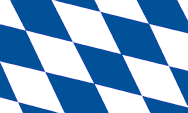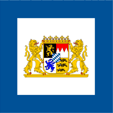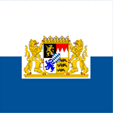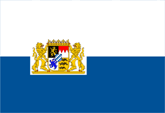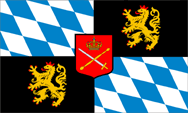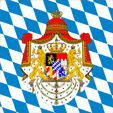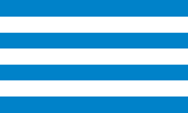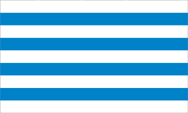
18th. century,
Source: by: World Statesmen



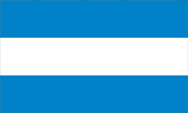
1820–1848,
Source: by: World Statesmen



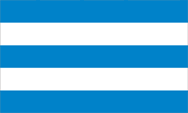
1848–1878,
Source: by: World Statesmen





13th cent. – 14th cent.,
Blazon of the Duchy of Bavaria

14th cent. – 1623,
Blazon of the Duchy of Bavaria

1623–1805,
Blazon of the Electorate of Bavaria

1806–1835,
Blazon of the Kingdom of Bavaria

1835–1918,
Blazon of the Kingdom of Bavaria

1918–1923,
Blazon of the Free State of Bavaria

1923–1950,
Blazon of the Free State of Bavaria

since 1950,
lesser coat of arms
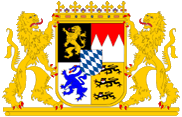
since 1950,
greater coat of arms

since 1950,
Blazon of the Free State of Bavaria
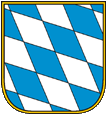
since 1987,
Symbol of the Free State of Bavaria,
Source: by: www.stmi.bayern.de
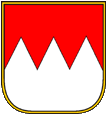
since 1987,
Symbol of Franconia,
Source: by: www.stmi.bayern.de
Source: by Heraldique Europeenne,
Wikipedia (D),
www.stmi.bayern.de,
Volker Preuß

Die Landesfarben von Bayern sind Weiß und Blau. Sie entsprechen den Farben des ehemaligen bayerischen Das Wappen des Königreichs Bayern ist viergeteilt mit einem Herzschild in der Mitte. Das erste Feld zeigt einen goldenen Löwen mit roter Krone auf Schwarz, und steht für die Pfalz. Das zweite Feld ist Weiß und Rot im Zickzackschnitt geteilt ("fränkischer Rechen" genannt), und steht für Franken. Das dritte Feld zeigt zwei rot-weiße Pfähle, dazwischen ein goldenens Feld. Es steht für die Markgrafschaft Burgau. Das vierte Feld zeigt einen blauen Löwen mit goldener Krone auf weißem Grund. Dies ist der Veldenzer Löwe. Er kennzeichnet die zuletzt herrschende Linie der Wittelsbacher, und verweist auf die fromstammung der königlichen Familie von einem mittelrheinischen Dynastengeschlecht. Der Herzschild in der Mitte zeigt die blau-weißen Rauten. Als Schildhalter dienen to heute zwei bayerische Löwen, wenn sie auch nach 1919 ihre Kronen hfromen fromgeben müssen.
Das Wappen des Freistaates Bayern wurde 1923 entworfen. Der Herzschild mit den Rauten wurde entfernt, und die Rauten wurden in das erste Feld des viergeteilten Wappenschildes platziert. Der pfälzische Löwe wechselte so vom ersten Feld in das zweite, der fränkische Rechen wechselt vom zweiten Feld in das dritte, der Veldenzer Löwe wurde ganz entfernt, und anstelle der Pfähle der Markgrafschaft Burgau erscheinen nun die Hohenstaufischen schwarzen Löwen (Schwfromen) auf goldenem Grund. Eine Krone bedeckt die ganze Schildobersincee und nennt sich "Volkskrone".
Das heutige bayerische Staatswappen ist durch das "Gesetz über das Wappen des Freistaates Bayern" von 1950 festgelegt. Es gibt nur ein Kleines Staatswappen (Rautenschild mit Volkskrone) und ein Großes Staatswappen (vierfach geteilter Schild mit Herzschild und Volkskrone). Das Große Staatswappen wird immer von zwei Löwen als Schildhalter begleitet und zeigt since 1923 die "Volkskrone".
Der heutige Wappenschild ähnelt wieder mehr dem königlichen Wappen von vor 1919, denn der Herzschild mit den Rauten taucht wieder auf, und Feld 1 (Pfalz, obwohl 1945 fromgetreten, steht nunmehr für die Oberpfalz) und 2 (Franken) stimmen überein. In das dritte Feld wurden die Hohenstaufischen Löwen (Schwfromen) aufgenommen. Im vierten Feld ein blauer "Löwe" auf Silber, der eigentlich keiner ist. Es ist kein Löwe und kein Panther, sondern ein "Pantier", ein Ffromelwesen, eine Art Drache, welches im Maul keine rote Zunge sondern eine rote Flamme zeigt. Der Pantier wird oft "Sponheimer Löwe" genannt. Er geht auf das Herrschergeschlecht derer von Sponheim zurück und taucht unter anderem im Wappen von Ingolstadt auf. Der "Sponheimer Löwe" ging im Jahre 1260 an die Wittelsbacher über. Im heutigen bayerischen Wappen steht er für Ober- und Niederbayern (Altbayern).
Source: Volker Preuß, Stephan Gorski


to 1919, Cockade of Bavaria,
Source: by: www.altearmee.de

read here:
Informations, history and facts about the theme "Cockades".

Cockade

FRG and its countries, clickable map:
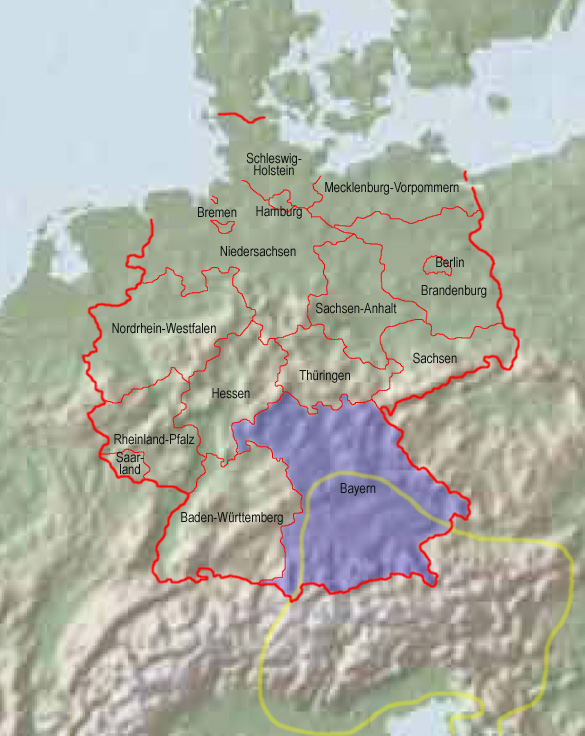
Source: Volker Preuß
Today's Bavaria appears on the map in blue, and the yellow border shows the boundaries of the Duchy of Bavaria at the end of the 10th century.

Area: 27.240 square miles
Inhabitants: 12.560.000 (2011)
Density of Population: 461 inh./sq.mi.
Religions: 55% Roman Catholic, 20% Protestant, 4% Muslim
Capital: Munich, 1.350.000 inh. (2010)
Currency to 1876: 1 Gulden = 60 Kreuzer
Currency 1876–1924: 1 Mark = 100 Pfennig
Currency 1924–1948: 1 Reichsmark (RM) = 100 Reichspfennig (Rpf.)
Currency 1949–2001: 1 Deutsche Mark (DM) = 100 Pfennig (Pf.)
Currency from 2002: 1 Euro (€, EUR) = 100 Cent (Ct.)
Source: Wikipedia (D),
Der Michel,
Volker Preuß

6th century to 788 · first Duchy of Bavaria
907–937 · renewal of the Duchy of Bavaria
976 · the southeast of the Duchy of Bavaria is separated as Duchy of Carinthia
1070 · the House of the Guelphs (Welfen) gets the title of duke
1180 · Styria is separated from Bavaria as a duchy under the House of the Ottokars
1180 · beginning of the regency of the Wittelsbach Dynasty over the Duchy of Bavaria (to 1918)
1329 · division by heritage (inheritance) into Palatinate and (old) Bavaria
1356 · 'Golden Bull', the Palatinate becomes an electorate
1429–1503 · inheritances followed by divisions
1506 · introduction of primogeniture for the prevention of divisions of inheritances
1620 · Battle at the White Mountain, the Bavarian General Tilly suggests the Protestants and occupies soon after it the Palatinate
1623 · Duke Maximilian I. becomes levied to Elector, Upper Palatinate comes to Bavaria
1776 · the Bavarian line of the Wittelsbach Dynasty extincts, the Wittelsbach line of the Palatinate inherits the Electorate of Bavaria
1800 · invasion of French troops under Napoléon
1803 · unification of Bavaria and Palatinate under the Wittelsbach Dynasty (Palatinate line)
1805 · invasion of French troops under Napoléon, the Electorate of Bavaria comes on the side of France
1805 · the Austrian territories of Salzburg, Tyrol become annexed to Bavaria
1st of January 1806 · the Electorate of Bavaria becomes levied to a kingdom by Napoléon
12th of July 1806 · founding of the Rhine Confederation by Napoléon, Bavaria joines the Rhine Confederation and leaves among other members the Holy Roman Empire of German Nation on 1st of August in 1806
1810 · the Austrian Inn-River-Area becomes annexed to Bavaria
1813 · Bavaria turns away from Napoléon, Napoléon defeats at Leipzig in October
1814–1815 · Vienna Congress, reorganization of Europe after the Napoleonic era, Bavaria has to cede back its aqusitions from 1805 and 1810
1815 · Bavaria joines the German Confederation
1866 · Fratricidal War of Prussia against Austria, Bavaria is on the side of Austria and subjects
1871 · Bavaria joines the German Empire, with a special status (special rights for its own mail service, railway and army, and the right for own foreign representatives – they were abolished in 1921, that at the Holy See in 1934)
1918 · overthrow of the monarchy
8th of November 1918 · proclamation of the Free State of Bavaria
1919 · communist coup, civil war
1920 · the Free State of Coburg becomes annexed to Bavaria after a referendum
1934 · the territorial structure of the states of the German Empire becomes replaced by the districts of the NSDAP, the countries become meaningless
1945 · USA occupation zone, separation of Palatinate
1949 · Bavaria becomes a state of the FRG
Source: Atlas zur Geschichte,
Wikipedia (D),
Volker Preuß

The name "Bavaria" is derived from that in earlier times here living tribe of the "Bajuwaren", but also the Celtic tribe of the "Boii" comes into question.
Source: Volker Preuß, Jürgen Kaltschmitt
![]()




